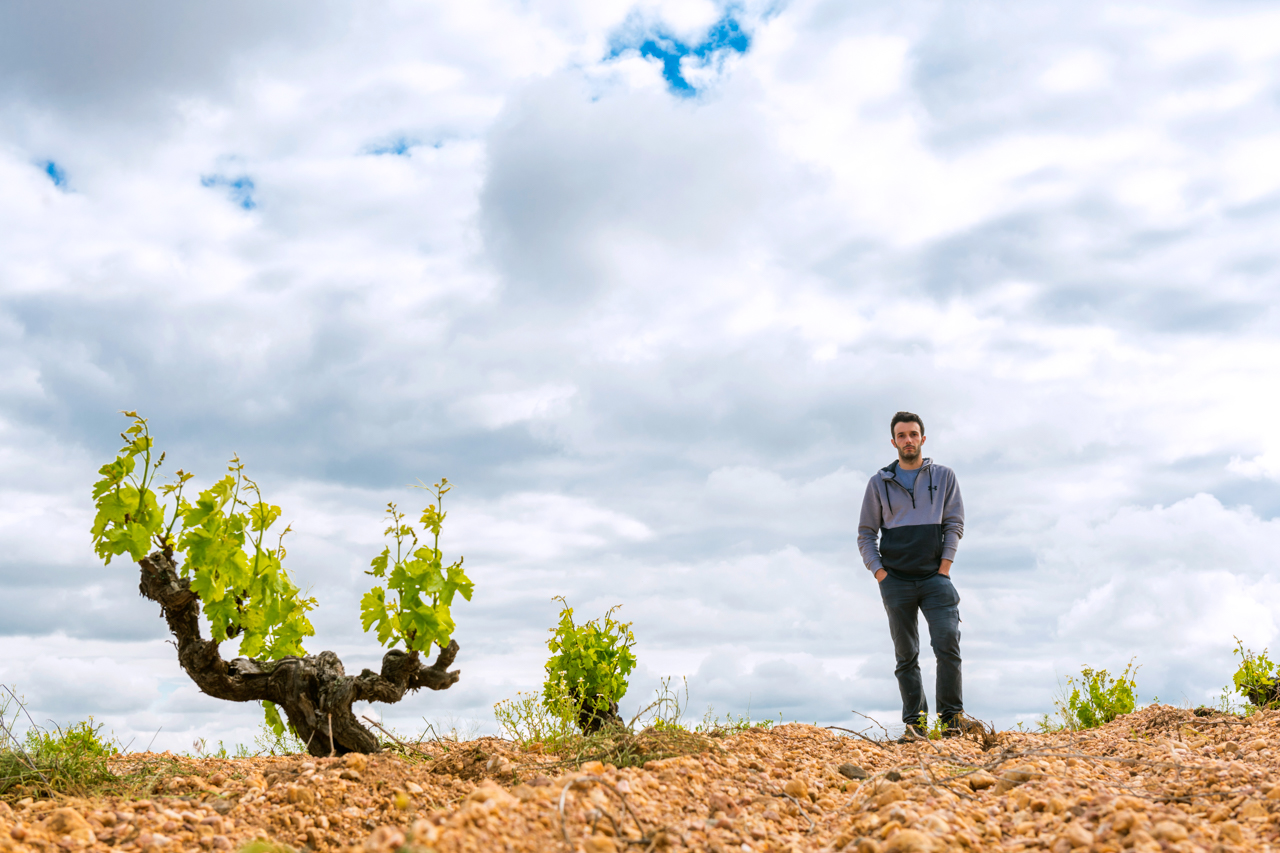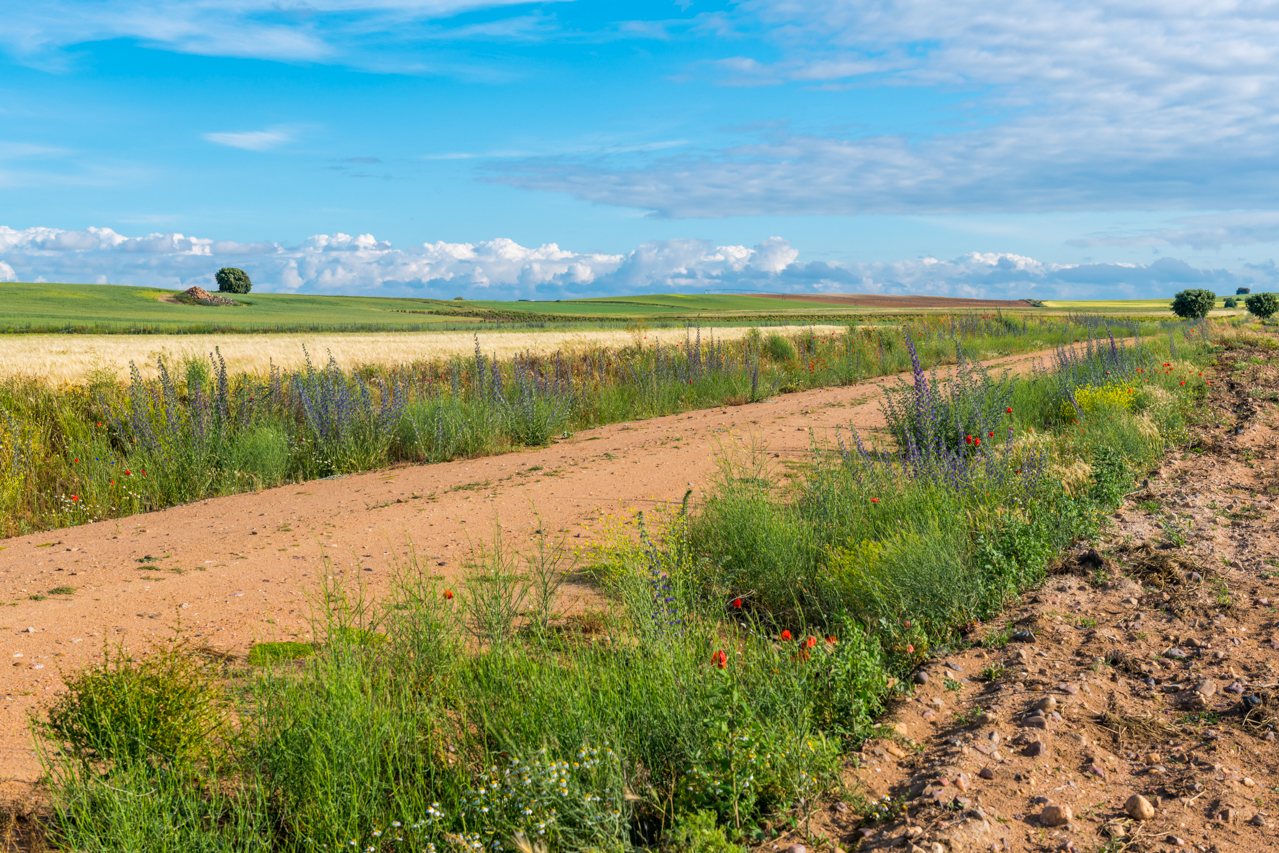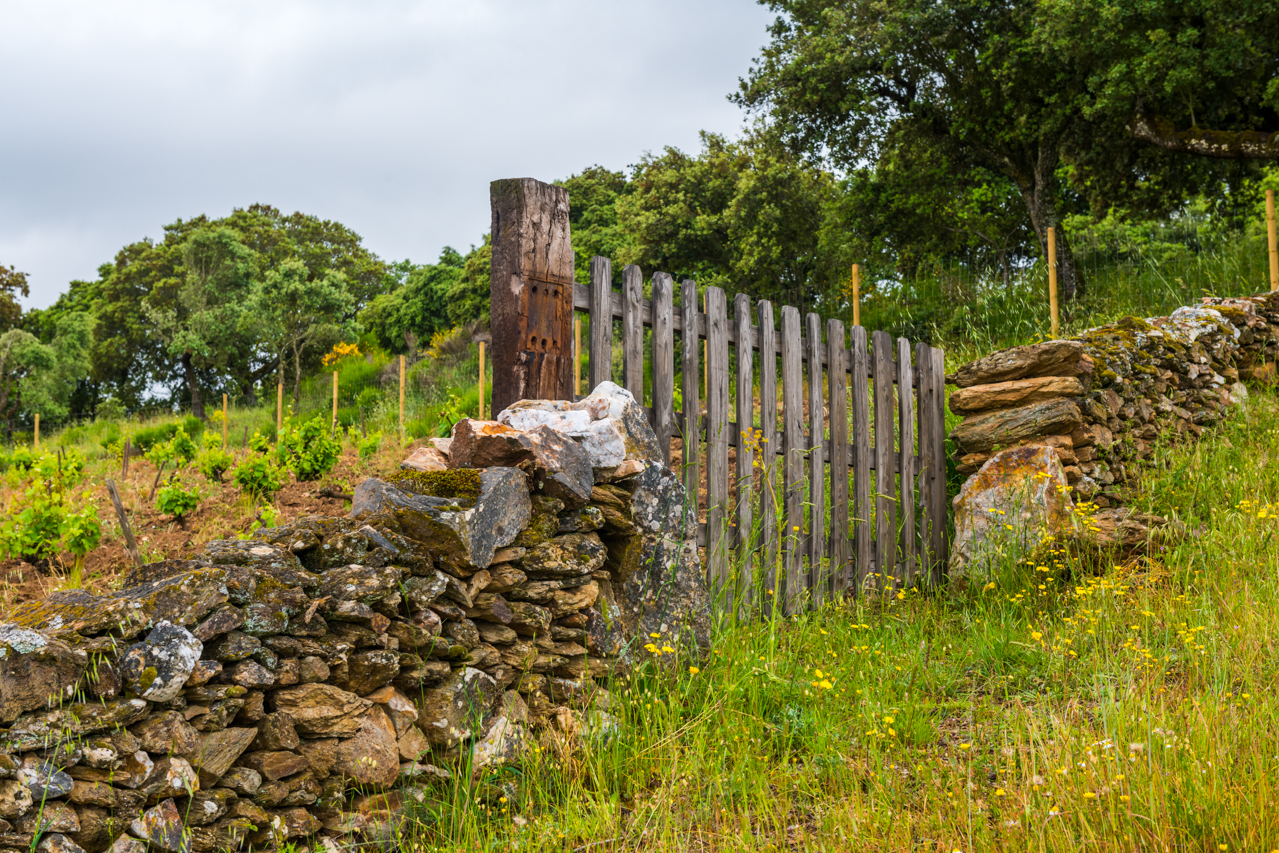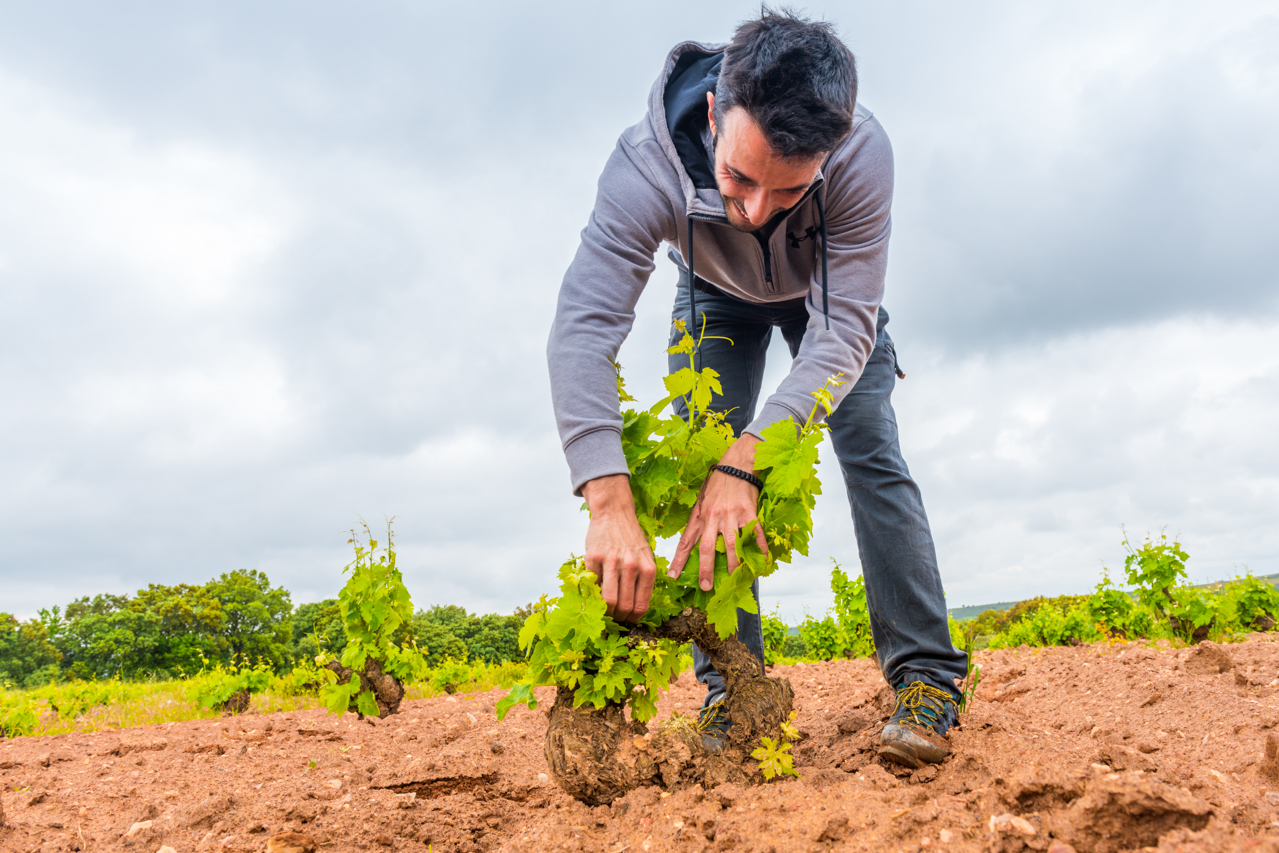


Alvar de Dios in Vagüera
It was a bit of destiny or life. I had never thought, nor had it crossed my mind to end up in the world of wine. I was born and raised in El Pego, which historically was, and is one of the towns with the greatest wine-growing tradition in the Toro area, my family worked a lot of old vineyards, and from the age of 12 or so, I had always gone to help harvest, prune, collect shoots.
Until 2007, which was a very complicated vintage since it rained a lot in the middle of the harvest, and that led to about two harvests (those that harvested before the rain and those that harvested almost ten days after). For that year, I was in the group of grape pickers who worked for a winery that harvested before the rain. At that moment is when everything intersects, a friend of mine worked for a winery where Telmo Rodriguez was a tenant and where Fernando Garcia was looking for someone to help him, and I showed up at 22 years old, a small-town boy.
This vintage changed my life. It opened my mind and made me realize that it wasn’t that I didn’t like wine. It was that I didn’t know wine. I did not know other regions, varieties, soils…
Fernando taught me about Burgundy, the Rhône, Piedmont. Bottles were opened, endless conversations about producers, vintages, soils, shared with a group of young people who wanted to change (and who are now succeeding at changing) the panorama of Spanish wine.
In 2008, I went to the Gredos to Bernabeleba, where I again met Fernando and Dani in the beginnings of command G. In 2009, I worked with Daniel in Jimenez-Landi, and in November 2010, I joined the Marañones team with Fernando Garcia. Until 2015, I had been solely at Marañones and closely linked to Gredos.

The sandy soils of El Pego
What I learned (or lived) in Gredos was the beginning of something that ten years later has become enormously, the realization of the dream of several crazy people who bet a lifetime to revolutionize a region. In Toro, young people couldn’t get together to write a new page on the history of Spanish wine. The greatest thing I learned was how work, effort, tremendous dedication, trips, dinners, and thousands of open bottles, made it possible to shape an area. Surrounding yourself with extraordinary people and living with them makes you believe that what they do is easy, but it is not. If it weren’t for those experiences, surely I would not have my project now.
El Pego is the town where I grew up, and I have spent most of my life. It is my town, where my family is, and where my roots are. So it is the origin of everything. El Pego is the most unique town at ground level in the entire DO of Toro.
Honestly, I believe that the DO has lost its vision of what the “bull” is. They continue to defend a recipe that triumphed in the 2000s, of structured wines, always present wood, maximum extraction, and alcohol. But before this famous “bull,” we made wines differently, in the home wineries and in cellars of the first producers in the DO, they did not know of 225l barrels. Instead, they used foudres; they put Garnacha or white grapes together with the Tempranillo, they did not destem. Now they call typicity a recent recipe for success.
My vision is different. I want to return to homemade wines with little intervention. To maintain the little freshness in the area and to work for freshness and not structure.

Yavallo in Arribes.
Arribes always caught my attention because there are so many varieties, and the terroir is entirely different with enormous potential. It is an area yet to be discovered that goes much more with my vision of wines than “bull” is. I found much more Atlantic varieties with lower potential alcohol, more acidity, an incredible diversity of soils.
Of my generation that I have lived with and learned from – Fernando Garcia, Daniel Landi, Olivier Rivière, Javi Revert, Envinate, Fedellos de Couto, Rodrigo Mendez, Jose Luis Mateos, Ricardo Palacios, Diego Magaña… the list is enormous, we are seeing a large generation of winegrowers capable of transmitting the landscapes of their regions with their wines.
Roulot, Roumier, Mugnier, Antonie Foucault, Elian da Ros, Dagueneau… there are so many !!!
Being little or non-interventionist, I believe that the most essential thing comes from the vineyard, working it better and better, being more precise, making grapes more balanced every year. And then, in the winery, try to be respectful with the work carried out in the vineyard throughout the cycle.

Alvar does seem happier in Arribes…
My project has always been circumstantial, I have grown little by little, and my old labels expressed that. But put all together, it was difficult to think that they belonged to the same project. Now with the change, there is a common line in all that makes the project recognizable.
No, in the short term, the important thing for me is to work better, know the plots well, and get the most out of them. I will plant next year, but it will be in the same terroirs.